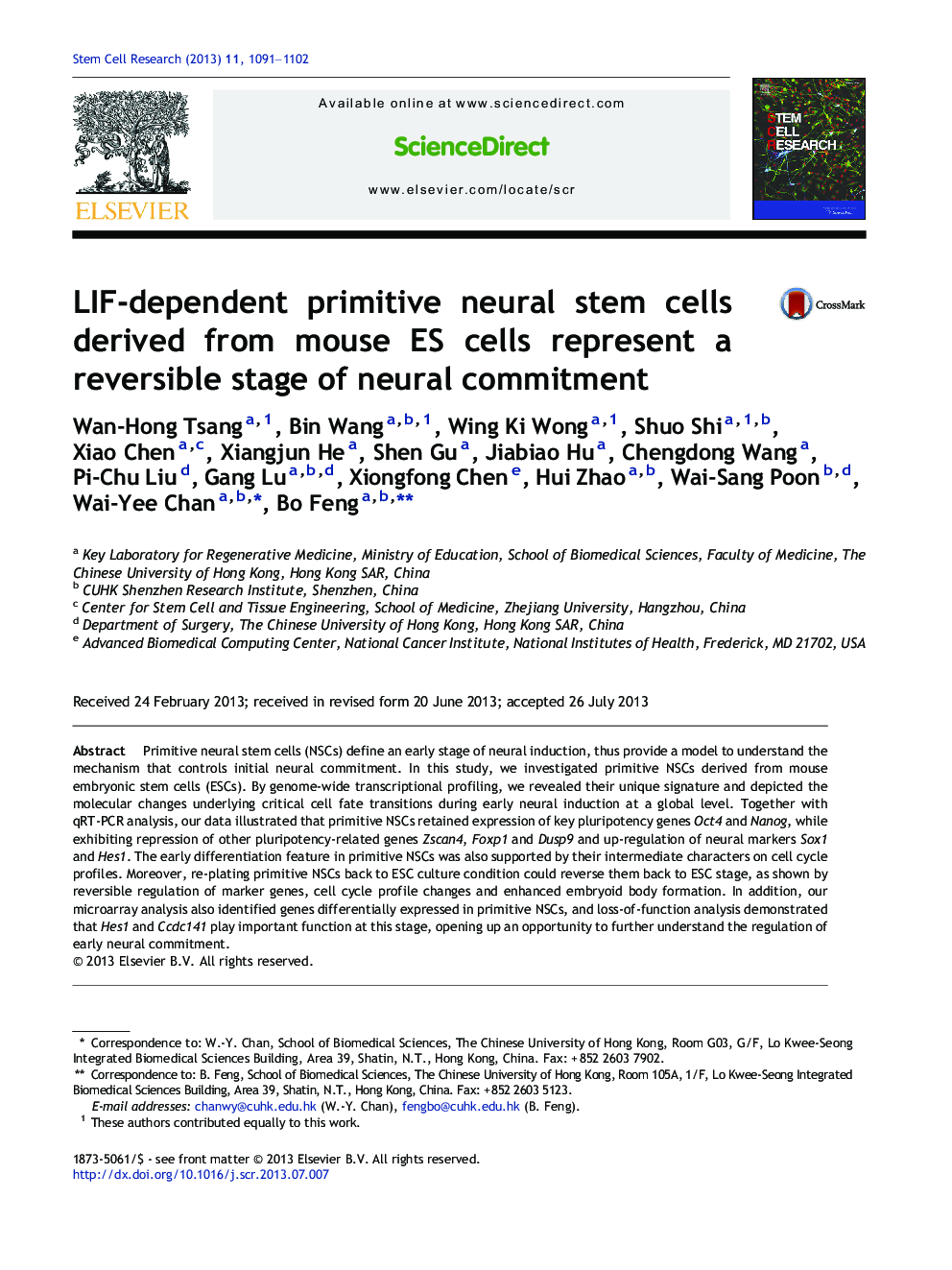| Article ID | Journal | Published Year | Pages | File Type |
|---|---|---|---|---|
| 10891276 | Stem Cell Research | 2013 | 12 Pages |
Abstract
Primitive neural stem cells (NSCs) define an early stage of neural induction, thus provide a model to understand the mechanism that controls initial neural commitment. In this study, we investigated primitive NSCs derived from mouse embryonic stem cells (ESCs). By genome-wide transcriptional profiling, we revealed their unique signature and depicted the molecular changes underlying critical cell fate transitions during early neural induction at a global level. Together with qRT-PCR analysis, our data illustrated that primitive NSCs retained expression of key pluripotency genes Oct4 and Nanog, while exhibiting repression of other pluripotency-related genes Zscan4, Foxp1 and Dusp9 and up-regulation of neural markers Sox1 and Hes1. The early differentiation feature in primitive NSCs was also supported by their intermediate characters on cell cycle profiles. Moreover, re-plating primitive NSCs back to ESC culture condition could reverse them back to ESC stage, as shown by reversible regulation of marker genes, cell cycle profile changes and enhanced embryoid body formation. In addition, our microarray analysis also identified genes differentially expressed in primitive NSCs, and loss-of-function analysis demonstrated that Hes1 and Ccdc141 play important function at this stage, opening up an opportunity to further understand the regulation of early neural commitment.
Related Topics
Life Sciences
Biochemistry, Genetics and Molecular Biology
Biotechnology
Authors
Wan-Hong Tsang, Bin Wang, Wing Ki Wong, Shuo Shi, Xiao Chen, Xiangjun He, Shen Gu, Jiabiao Hu, Chengdong Wang, Pi-Chu Liu, Gang Lu, Xiongfong Chen, Hui Zhao, Wai-Sang Poon, Wai-Yee Chan, Bo Feng,
